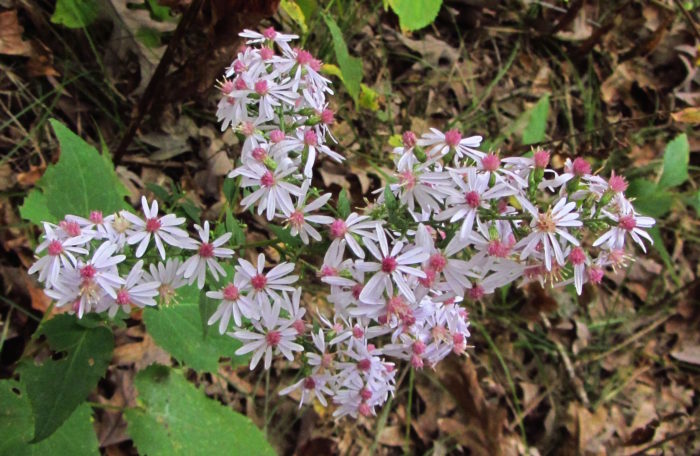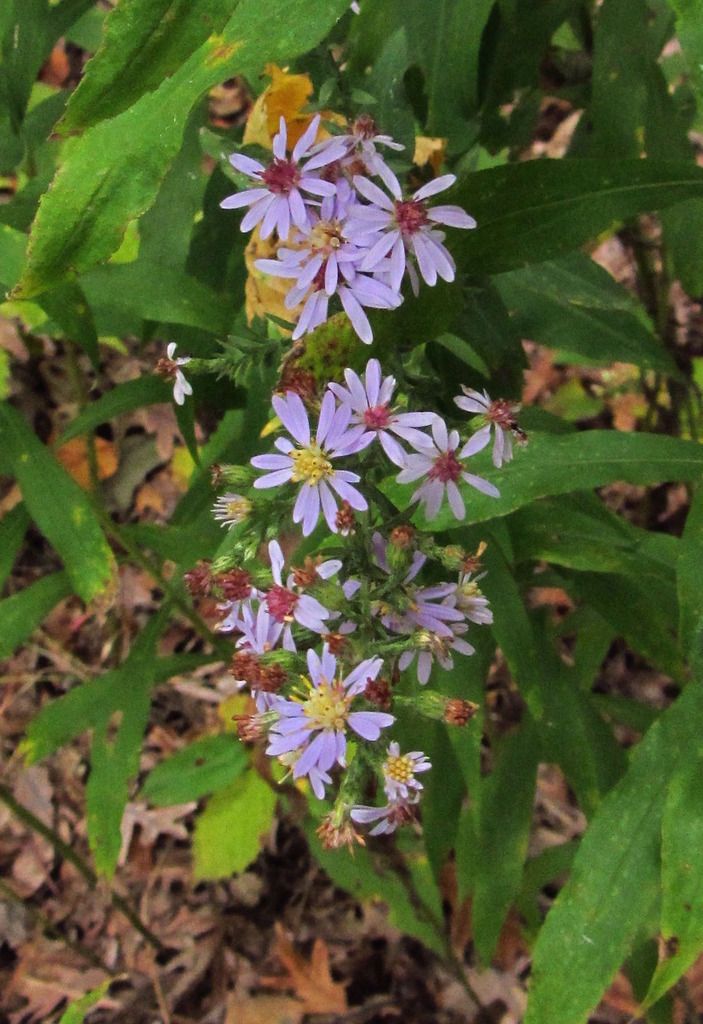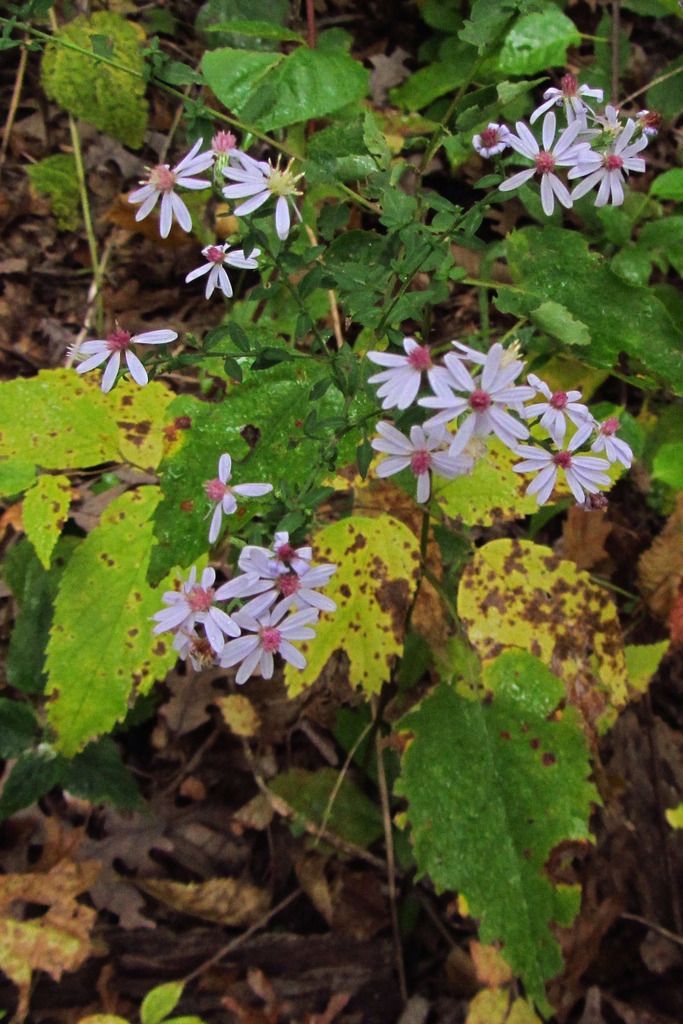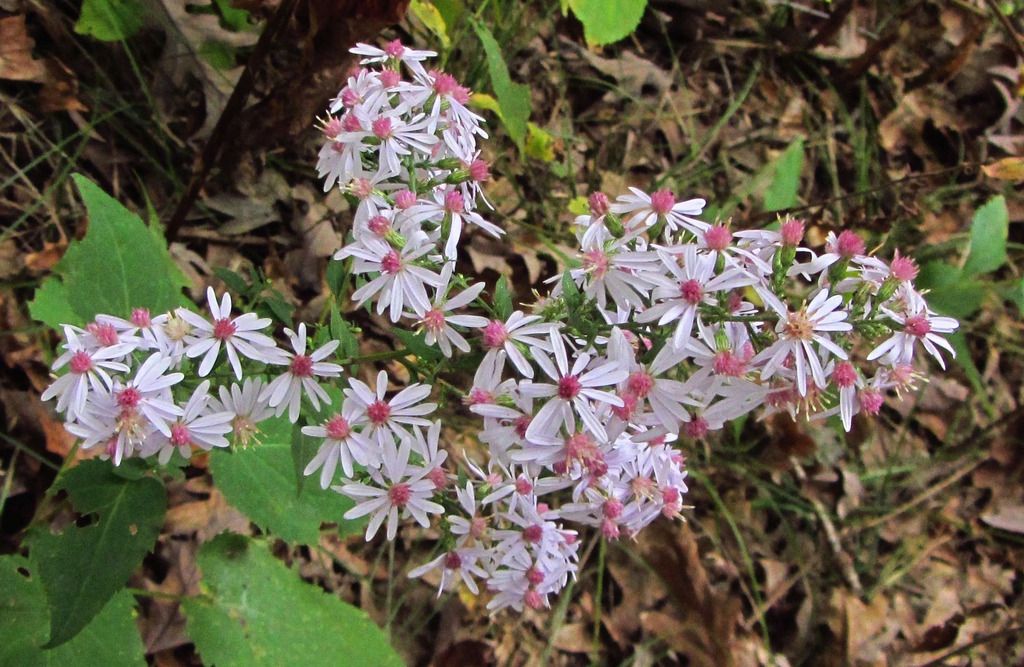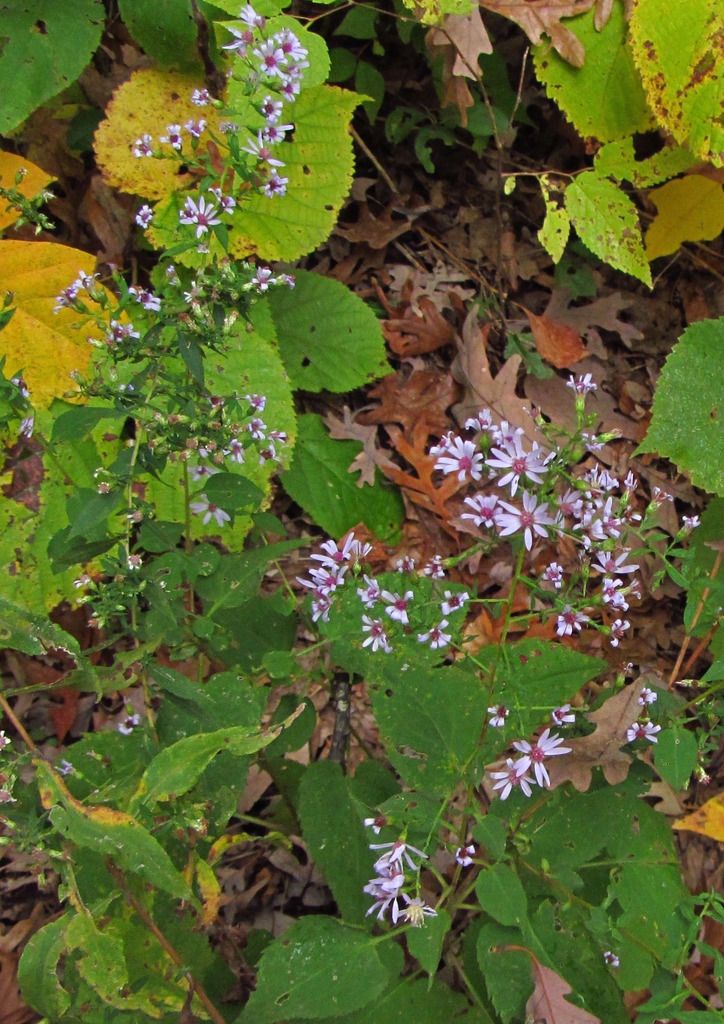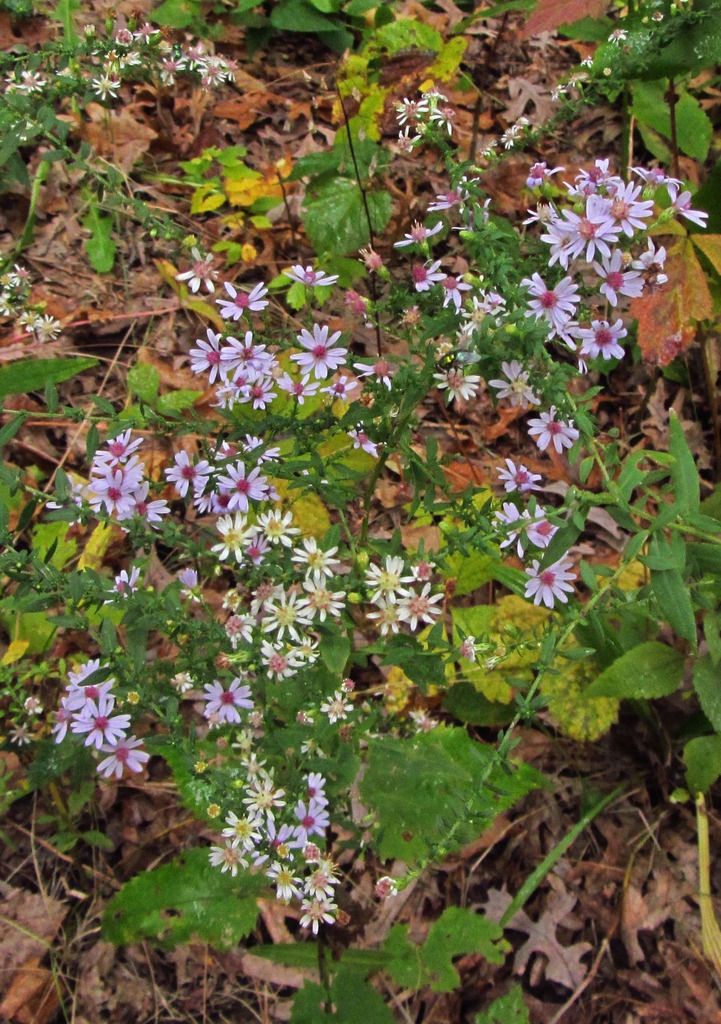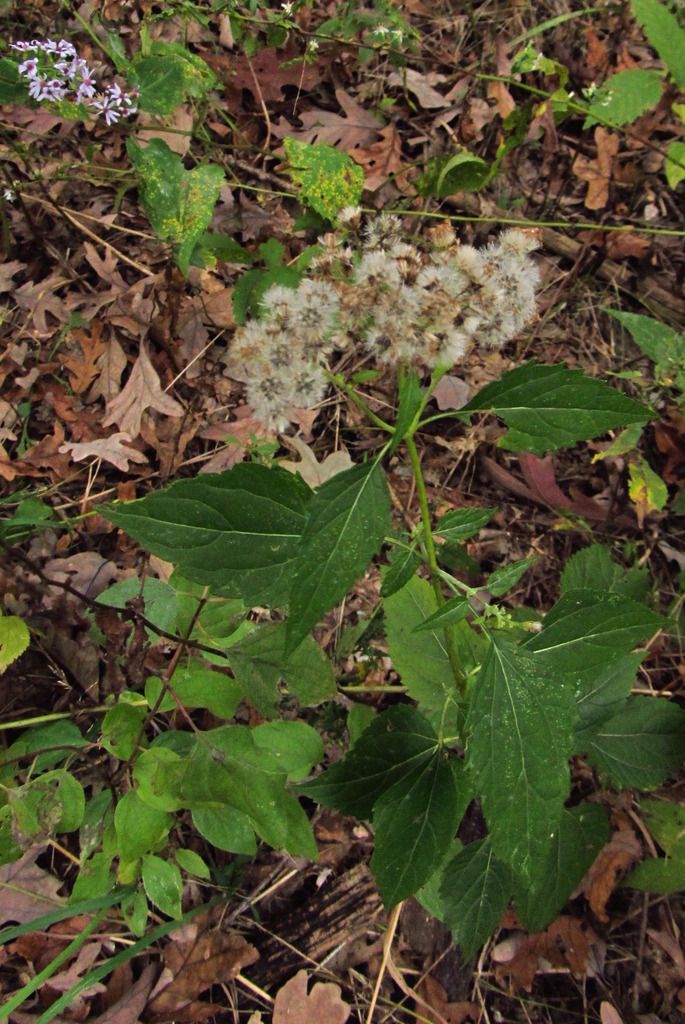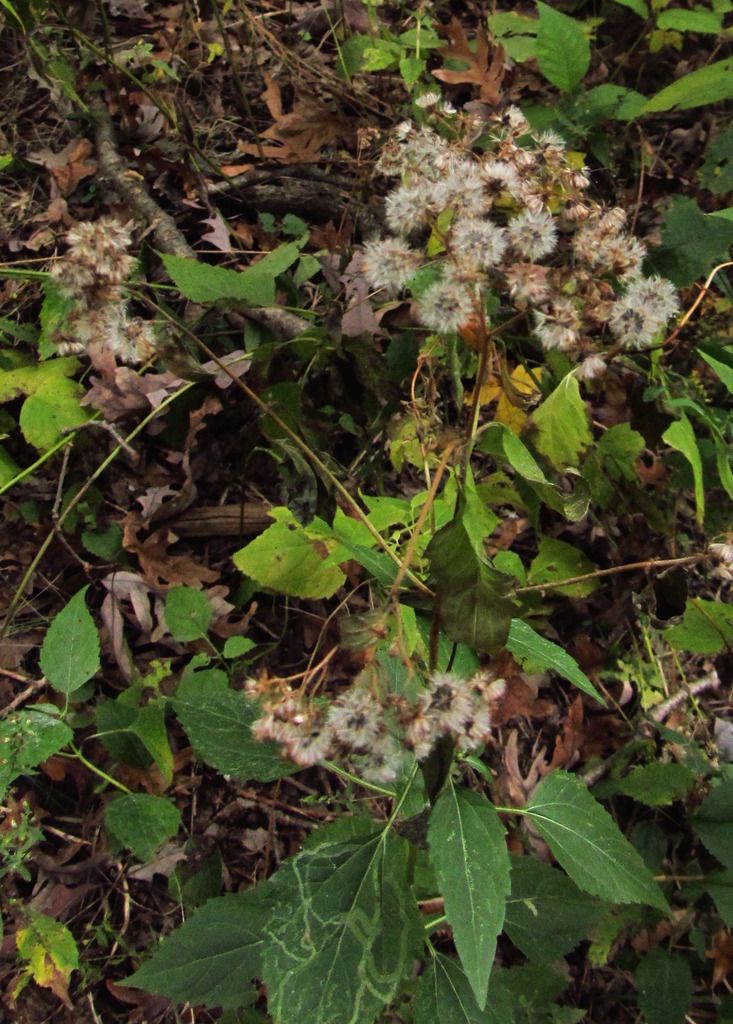Long after most woodland or prairie wildflowers have gone to seed, many aster species are blooming well into the autumn across Iowa. One of the prettiest is blue wood aster (Symphyotrichum cordifolium), also known as heart-leaved aster, common blue wood aster, or broad-leaved aster.
This plant is native to most of North America east of the Rocky Mountains and thrives in “moist to dry deciduous woodlands, woodland borders, areas adjacent to woodland paths, thinly wooded bluffs, shaded areas along streambanks, and rocky wooded slopes.” I took the enclosed pictures in mid-October along the driveway that leads from 45th Street to the Bergman Academy (old Science Center of Iowa building) in Des Moines.
The Illinois Wildflowers and Friends of the Eloise Butler Wildflower Garden websites are good resources for botanically accurate descriptions of blue wood aster foliage, flowers, and seeds.
Like other plants in the aster family, blue wood aster flowers have ray and disc florets. Many asters in Iowa are difficult to distinguish, because they have white ray florets and yellow centers. Blue wood aster stands out, because its ray flowers are usually pale blue or violet, and the disc flowers start out yellow but “become pale purple to reddish purple with age.”
On some plants, the ray flowers appear more pink than blue/violet.
Some of the flowers are just opening on this plant:
Here some blue wood aster is growing next to a species with white ray flowers, which I think is calico aster.
Ray flowers start to drop off as the plant passes peak blooming period.
In the foreground, a blue wood aster plant that has gone to seed. Another plant is blooming near the upper left.
More blue wood aster with seeds, which may be a food source for birds including wild turkeys.

